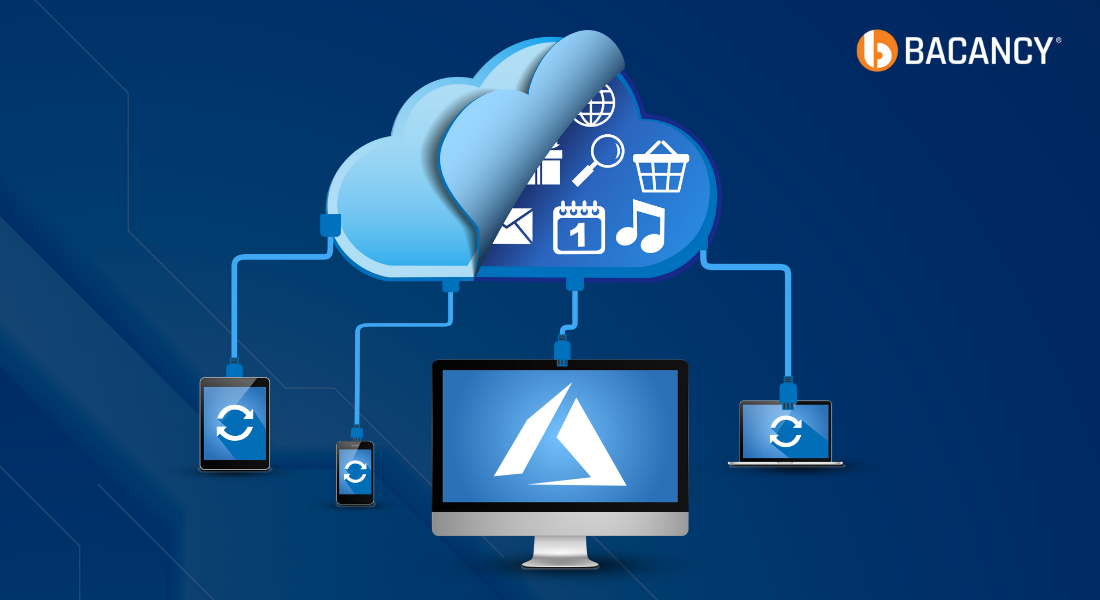Table of Contents
Introduction
When we talk about cloud computing, managing Azure resources is crucial for organizations aiming for flexibility and growth. Azure Resource Manager(ARM) is the go-to solution, providing a single platform to organize, deploy, and manage Azure resources.
This guide explores Azure Resource Manager (ARM), including key features, benefits, use cases, best practices, and more. Whether simplifying resource setup or boosting security with role-based access control (RBAC), ARM is the tool for optimizing Azure resource management. Follow along as we dive into ARM, helping you unlock Azure’s power quickly and clearly.
What is Azure Resource Manager?
Azure Resource Manager acts as a central hub for overseeing your Azure resources. It simplifies creating, modifying, and removing resources within your Azure account. Moreover, it also offers essential management facilities such as access control, resource locking, and tagging for enhanced security and organization post-deployment. Let’s look into how you can effectively do it.
🔶 Deploy App Resources
ARM simplifies the process of setting up your application in the Azure cloud. Instead of combining different parts of your app separately, ARM lets you describe everything you need in one document. Just like a blueprint, it instructs Azure on how to create your app’s environment. You can use the exact blueprint for various app versions, such as testing or the final product.
Note: If you acquire an app solution from the Azure Marketplace, it already comes with a pre-made blueprint, saving time & effort.
🔶 Organize Resources
With Azure Resource Management, managing and organizing your resources becomes effortless. Rather than mutually connecting each part of your app, ARM does it for you. By grouping all the similar parts of your app in a “resource group,” ARM makes it easy to manage and control all these components collectively. Also, you can apply tags to different parts of your app for better organization and to simplify tasks like tracking costs and resource usage.
🔶 Control Access to Resources
Azure Resource Manager enables you to manage access and modifications within Azure by defining rules and permissions for yourself and your team. It allows you to control who can make changes and ensures that critical components of your application are protected from unauthorized access or modifications. Additionally, Azure Resource Manager maintains a comprehensive record of all user actions, providing an audit trail for monitoring and tracking changes to ensure integrity.
Important Terminologies in Azure Resource Manager
🔶 Resource: Manageable entities such as virtual machines, storage accounts, web apps, databases, and virtual networks.
🔶 Resource Group: A container that groups related resources, collectively aiding their organization and management.
🔶 Resource Provider: A service provider that provides Azure resources, like Microsoft. For instance, Microsoft. Compute is a common resource provider offering virtual machine resources, while Microsoft. Storage is for storage.
🔶 Declarative Syntax: It is a way of stating what you want to create without mentioning specific commands. It is used in files like Azure Resource Management template or Bicep files.
🔶 ARM Template: A JSON file, known as JavaScript Object Notation, that outlines one or multiple resources for deployment within a resource group, subscription, management group, or tenant. These templates guarantee consistent and repeatable resource deployment.
🔶 Bicep File: It’s a file utilized for the declarative deployment of Azure resources, serving as a language tailored for crafting infrastructure as code solutions within Azure.
🔶 Extension Resource: An extension resource adds extra capabilities to another resource. For example, a role assignment specifies access to other resources.
Key Features of Azure Resource Manager
Let’s take a look at the cool key features of Azure Resource Manager
🔶 Consistent Management Layer
Azure Resource Manager offers a unified way to manage your Azure resources, whether using the Azure portal, PowerShell, REST APIs, or client SDKs. It means you always use the same system (ARM), no matter how you access Azure.
This consistency ensures you have a familiar experience and access to the same features, regardless of your chosen interface. It simplifies resource management for all users, minimizes the learning process for newcomers, and streamlines overall resource management.
🔶 Tagging capabilities
Tags in Azure are like labels you can stick on your resources, giving them names and values. These tags assist in structuring your resources to align with your organization’s needs, facilitating smoother management and monitoring processes.
For example, you can tag resources according to different categories, such as cost centers, projects, or environments. This makes it easy to sort and track your Azure resources efficiently.
🔶 Template-Driven Deployment & Automation
Azure Resource Manager makes it easy to deploy and automate your infrastructure using templates. These templates, called Azure Resource Manager templates, are like blueprints written in JSON format. They define all the resources your applications need in Azure.
With Azure Resource Management templates, you can specify what you want to deploy without worrying about how to create each resource. This makes your deployments more reliable and repeatable. Plus, you can ensure smooth and consistent application deployment processes since ARM templates can be version-controlled, tested, and integrated into your CI/CD pipelines.
🔶 Role-Based Access Control (RBAC)
Azure Resource Manager collaborates with Azure’s Role-Based Access Control (RBAC) to give you authority over resource access. It determines which individuals can access your resources and the actions they can execute. It lets you set up access rules that align with your organization’s policies, ensuring that only the right people can use your resources effectively.
Roles can be assigned to users, groups, or even applications across various levels of your Azure configuration. For example, you might give someone the “Reader” role for your whole subscription so they can see everything but not make any changes.
🔶 Grouping Related Resources
ARM resource groups let you manage related resources together.
This simplifies the monitoring and management of your Azure configuration. You can apply consistent rules and permissions to the entire group, improving security and compliance.
How Azure Resource Manager Works?

Client Initiates Request
The process starts with a user or client initiating a request to manage Azure resources. This can be done through various interfaces like:
- Azure Portal: The online platform used to manage Azure resources.
- Azure PowerShell: A command-line interface for scripting Azure deployments.
- Azure CLI: Another command-line interface for managing Azure from the command prompt.
- SDKs: Software Development Kits allowing programmatic interaction with ARM.
REST Clients: Tools that interact with ARM using RESTful APIs.
Authentication and Authorization
- ARM authenticates the user or client using Azure Active Directory (AAD).
- AAD verifies the user’s identity and checks if they have the necessary permissions (Authorization) to manage the requested resources. This process is achieved through Azure Role-Based Access Control (Azure RBAC).
- Centralized Orchestration: Azure Resource Manager (ARM) simplifies resource deployment and management by offering a unified control plane for consistent resource creation, modification, and deletion.
- Infrastructure as Code (IaC): ARM templates define infrastructure as code, ensuring consistency and predictability in deployments across environments.
- Fine-Grained Access Control: Seamlessly integrates with Azure’s Role-Based Access Control (RBAC) system, providing fine-grained access control for security and compliance.
- Dependency Management: Simplifies resource dependency management, ensuring correct order of provisioning and updates to minimize errors and enhance consistency.
- IaC Practices: Facilitates Infrastructure as Code (IaC) practices, enabling collaboration, version control, and repeatability for well-documented configurations.
- Scalability and Efficiency: Templates are scalable and efficient, optimizing resource utilization and cost-effectiveness across projects and environments.
- Governance Framework: Combined with Azure Policy, provides a robust framework for implementing and enforcing governance practices to maintain security, compliance, and operational standards consistently across resources.
- Resource Tagging: Adding tags to your resources lets you keep everything organized and easily find whatever you need.
- Billing Clarity: By grouping resources with the same tag, you can see exactly how much you spend, making billing more transparent and easier to understand.
- Resources in a group share a lifecycle for consistent management.
- Each resource belongs to only one group for clear organization.
- Resources can be moved, added, or removed between groups.
- Group placement determines metadata storage location.
- Control operations are managed through the group’s location.
- Access control can be customized for each group.
- Tags can be assigned to groups or organizations.
- Resources in different groups can be interconnected.
- Deleting a group removes all associated resources.
- Each group can host up to 800 instances of a resource.
- Some resources are beyond the group level, like subscriptions.
- Groups can be created via portal, PowerShell, Azure CLI, or ARM templates.
Resource Group Identification
The client’s request specifies the target resource(s). Azure Resource Management identifies the resource group to which the resource belongs. A resource group is a logical container designed to manage related Azure resources.
Subscription Validation
ARM validates the target resource group’s association with a valid Azure subscription. An Azure subscription is a billing unit that defines your quota and spending limits for using Azure services.
Resource Provider Interaction
Based on the requested resource type (e.g., Virtual Machine, Web App), ARM interacts with the corresponding Azure Resource Provider. Each resource type has its provider responsible for its lifecycle management (create, read, update, delete).
Resource Deployment or Management
The Resource Provider processes the request based on the specific action (deployment, update, deletion, etc.). ARM orchestrates the entire process, ensuring dependencies between resources are handled correctly.
Response and Deployment Status
Once the Resource Provider completes the operation, it responds to ARM. ARM then relays this response to the client, including any status information (success, failure details).
Benefits of Using Azure Resource Management

Let’s quickly take a look at the benefits of Azure Resource Management
Levels of Management Scope
Azure offers four levels of management scope: management groups, subscriptions, resource groups, and individual resources. These tiers create a hierarchical framework for organizing and overseeing resources within Azure. Management configurations can be implemented at any of these levels, with lower levels inheriting configurations from higher levels.

For example, policies applied at the subscription level affect all resources within that subscription. Deployment templates can be deployed to tenants, management groups, subscriptions, or resource groups for resource provisioning.
What is a Resource Group?
A resource group is a framework for grouping related resources within an Azure setup. It facilitates coordinated actions like deploying, updating, and removing resources in a synchronized manner.
Here are the critical considerations for defining a resource group:
Resiliency of Azure Resource Management
Resource Manager and control plane operations (requests sent to management.azure.com) in the REST API are:

🔶 Designed for Resiliency and Continuous Availability.
Spread across multiple regions, Azure ensures that issues in one region do not impact the Resource Manager or other Azure services in other regions. However, some services only work in specific regions, so they might not be available if there is an issue in one region.
🔶 Distributed Across Regions and Availability Zones
Azure Resource Manager is spread across different Availability Zones and regions, especially in areas with multiple availability zones. This setup ensures that if a region loses one or more zones, the Resource Manager can switch to another zone or even another region to keep providing resource control capabilities for resources.
🔶 Independent of Single Logical Data Center
ARM’s architecture is not reliant on a single logical data center. Instead, it is built to leverage multiple data centers, enhancing reliability and mitigating the impact of potential data center failures.
🔶 Uninterrupted Operation During Maintenance Activities
ARM operates continuously without interruptions for maintenance activities. This uptime commitment ensures that critical control plane operations remain unaffected, allowing users to manage their resources without disruption.
🔶 Application Of Resiliency to Services Utilizing Resource Manager
The resilience inherent in ARM extends to the services that rely on it for resource management. For instance, services like Key Vault benefit from ARM’s resilient architecture, ensuring uninterrupted functionality even in challenging circumstances.
Azure Resource Manager Use Cases
Following are the everyday use cases where Azure Resource Manager is used:
🔶 Infrastructure as a Code (IaC)
The infrastructure code allows for the declarative definition of the infrastructure and resources necessary for your applications using Azure Resource Manager templates. This automation simplifies the deployment and management of intricate configurations, guaranteeing user-friendliness and consistency.
🔶 DevOps
DevOps practices leverage the integration of Azure Resource Manager with tools such as Azure DevOps, GitHub Actions, and Jenkins to automate resource deployment and management. This integration facilitates the implementation of continuous integration and continuous deployment (CI/CD) pipelines. You can opt for Azure Integration Services to enable seamless data exchange and connectivity, enhancing overall workflow efficiency.
🔶 Multi-Tenant Applications
Multi-tenant applications benefit from Azure Resource Manager’s capability to create resource groups, enabling the management of resources for multiple clients or tenants. This segregation ensures efficient resource management and billing.
🔶 Compliance
Azure Resource Manager aids in maintaining compliance by allowing the definition of policies that enforce security and regulatory standards across Azure resources. This ensures adherence to legal obligations.
🔶 Disaster Recovery
In Azure disaster recovery scenarios, Azure Resource Manager templates enable the swift and effortless deployment of resources to a backup location, ensuring business continuity.
🔶 Deployment Automation
ARM templates can automate deployments through tools like Azure DevOps or Azure Automation. This enables you to streamline your deployment process and reduce manual errors.
ARM Best Practices to Build Perfect ARM Templates
Now that you understand Azure Resource Management’s capabilities, features, and use cases, let’s review the best practices for creating well-managed and effective ARM templates.
🔶 Modularize Templates for Reuse
Modularizing templates means simply breaking them into smaller, reusable components. This not only enhances easier management but also promotes reusability. With modularization, you can enhance the clarity and readability of the templates, which can help developers who work with you. It also allows for advanced testing, as these modules can be tested separately before being combined into one larger system.
🔶 Use Parameters & Variables
Parameters and variables play crucial roles in template customization and simplification. Parameters allow templates to adapt to various deployments by accepting different values. Variables, on the other hand, streamline complex expressions and define reusable values within templates.
Efficient utilization of parameters and variables significantly improves template flexibility and maintainability. It enables easy template adjustments for deployment scenarios and reduces errors by minimizing hard-coded values.
🔶 Implement Dependencies with the Dependent Property
Using the “dependsOn” property in ARM templates, you can specify dependencies between resources. This ensures that resources are deployed in the correct order, with each resource only deployed after its dependencies have been successfully deployed. This feature enhances the reliability and efficiency of complex deployments.
🔶 Handle Sensitive Information Securely
Sensitive information like passwords and connection strings should never be directly stored as plain text in Azure Resource Management templates. Instead, it’s recommended that you securely store them in services like Azure Key Vault or other secret management systems. Then, you can reference these stored secrets in the templates.
By handling secrets securely, you prevent unauthorized access to sensitive data and maintain compliance with regulatory standards. Centralizing the secret’s management in services like Azure Key Vault simplifies updates and rotation when necessary.
🔶 Store Templates in Source Control
Utilizing source control enables you to monitor the evolution of your templates, offering a transparent record of modifications and their authors. This fosters collaboration among developers by allowing them to work on various sections of the templates independently.
Moreover, keeping templates in source control is a safeguard, permitting effortless reversal of changes if errors occur. Additionally, it empowers automated deployments by triggering template deployments whenever updates are pushed to the source control repository.
Expert Tip: Check out the Azure Resource Manager documentation for expert insights on optimizing your Azure infrastructure!
Conclusion
Azure Resource Manager is a cornerstone service for efficiently managing resources within the Azure cloud ecosystem. This centralized management layer not only streamlines deployment and monitoring but also ensures seamless management of resources across various interfaces. Its robust support for infrastructure as code (IaC), role-based access control (RBAC), and template-driven deployments make it indispensable for businesses leveraging Azure consulting services. By leveraging the capabilities of ARM, organizations can achieve heightened efficiency, scalability, and compliance in their Azure environments. Businesses can also hire Azure developers to confidently navigate the complexities of cloud deployment, propelling them further toward success in the digital landscape.
Frequently Asked Questions (FAQs)
ARM seamlessly manages resource dependencies according to the specified relationships within ARM templates, guaranteeing resources are deployed in the correct sequence to meet dependencies.
Indeed, ARM offers the capability to manage resources across multiple Azure regions, providing a unified management interface for globally deployed resources.
Yes, ARM supports the deployment of native Azure resources and third-party resources, provided their resource providers are available in the Azure Marketplace.
Azure Resource Manager (ARM) distinguishes itself as the modern deployment model for Azure resources, offering enhanced flexibility, scalability, and management features compared to the Classic model. ARM introduces template-based deployments, RBAC, and resource grouping, which are absent in the Classic model.
ARM empowers automation through its versatile suite of tools, including REST API, PowerShell cmdlets, Azure CLI, and SDKs. These tools enable developers and administrators to automate tasks such as resource provisioning, configuration, and management.
Your Success Is Guaranteed !
We accelerate the release of digital product and guaranteed their success
We Use Slack, Jira & GitHub for Accurate Deployment and Effective Communication.







